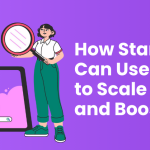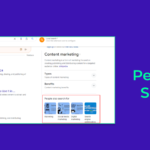Are you looking to create a website but need help figuring out where to start?
Creating your website can be daunting, especially if you’re starting from scratch.
However, with the right tools and guidance, you can have a professional-looking website in no time. WordPress is a powerful platform that provides an easy-to-use interface for creating and managing websites.
WordPress provides the tools and essentials to launch a website without hassle, from drag-and-drop builders to responsive design and security features.
Millions of people worldwide trust WordPress, a powerful website-building platform.
Whether you’re a blogger, small business owner, or just someone looking to create a website, WordPress has the tools and features you need to get online quickly and easily.
It’s easy to use, and you can customize your website to fit your needs.
With the right plugins and themes, you can create a website that looks great and works well in just a few clicks. This guide will dig deeper into the core mechanism to create a WordPress website in 2023!
8 Steps To A Successful WordPress Website
Creating a website with WordPress doesn’t have to be intimidating. With a few easy steps, anyone can get their WordPress website up and running in no time.
1. Choosing The Right Hosting Provider

With so many options available, it can take time to know which one is the best fit for you. To help you out, we’ve put together this guide to choosing the right hosting provider for your WordPress website.
Creating a WordPress website can seem overwhelming, but it can be surprisingly easy with the right hosting provider.
When selecting a hosting provider, you must consider several factors, such as cost, storage space, customer service, and scalability.
In addition, when choosing the right hosting provider, you’re investing in the future of your website, so it’s essential to make the right decision.
Five best practices for choosing the right hosting provider-
- Decide on your budget and the features you need.
- Compare hosting providers and their offerings.
- Read reviews to see what other people have said about the hosting provider.
- If available, try out a free trial, or ask for a refund if you’re unhappy with the service.
- Make sure the hosting plan comes with tech support and regular backups.
2. Setting Up A Domain Name

A domain name is like an address for your website. You need to set one up so people can find your website when they type in your domain name.
To set up a domain name, you’ll need to find a domain registrar that can help you purchase a domain name and then link it to your WordPress website so people can find it online.
You must do five steps to set up a domain name for your WordPress website.
- First, you need to buy a domain name from a domain registrar.
- Second, you need to connect your domain name to a hosting provider.
- Third, you need to install WordPress on your hosting account.
- Fourth, you need to configure your domain name’s DNS settings.
- Finally, you need to point your domain name to your WordPress site.
3. Installing WordPress
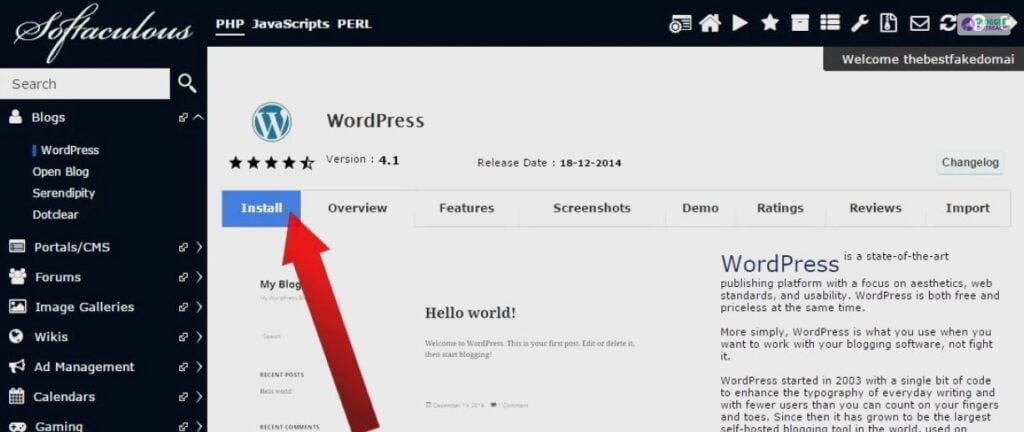
Installing WordPress on your website is an easy process. WordPress is incredibly easy to use.
Even if you don’t have any technical experience, you can create a beautiful website in a matter of minutes using WordPress. Here’s how:
- Firstly, visit WordPress.org and download the latest version of WordPress.
- Create a MySQL database and user on your web server.
- Upload the WordPress files to your web host using an FTP client.
- Open the URL in a web browser and run the WordPress installation script.
- Provide the requested information, such as database name, database user, and password.
- Click the “Install Now” button to complete the installation.
- Log in to the WordPress Administration Panel (Dashboard) with the username and password you selected during the installation.
- Use the Dashboard to customize your WordPress site, create pages and posts, install plugins, and more.
4. Choosing A Theme

Choosing the right theme requires a hands-on approach. Here’s how you can do the same-
(i) Decide On A Goal For Your Website: Before choosing a theme for your WordPress website, it’s important to determine the exact purpose of your website. For example, do you want to create a blog, an eCommerce site, or a portfolio? Knowing the purpose of your website will help you narrow down your theme options.
(ii) Website Design With WordPress: Consider the look and feel of your website and the features you need. For example, will you need multiple page layouts? Make sure the theme has all features you need.
(iii) Research Themes: Once you’ve narrowed down your theme options, take the time to research and compare the themes. Look at screenshots and read reviews of the themes to better understand how they look and function.
(iv) Check The Theme’s Compatibility: Make sure the theme you choose is compatible with the latest version of WordPress and any plugins or themes you use.
(v) Test The Theme: Once you’ve narrowed your selection, create a test website and install the theme. Take the time to explore the features and test out the theme. This will give you a clearer understanding of how the theme will look and function on your website.
5. Adding Content
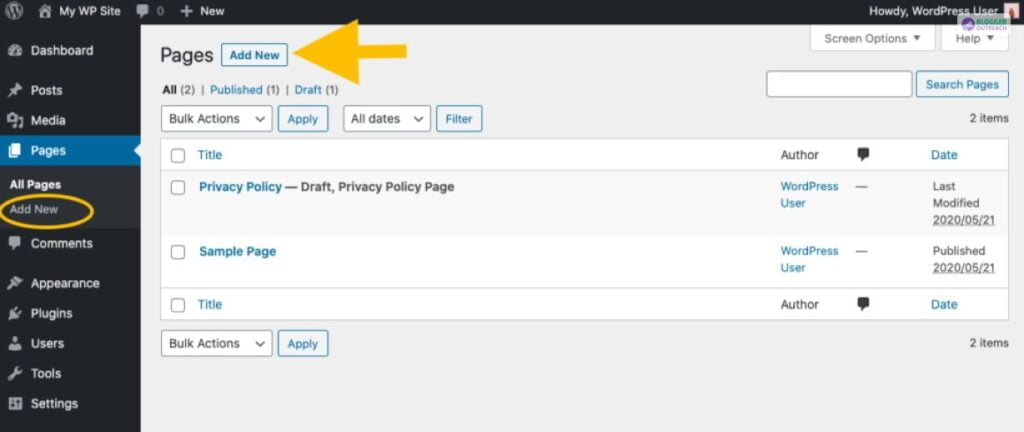
All the efforts will only be successful if you pay attention to the content’s importance. Effective content strategy comes with the following-
(i) Write Quality Content: The first step to adding content to your new WordPress website is creating quality content relevant to your audience. First, focus on writing interesting, informative, and engaging content. Next, consider what topics your audience would find exciting and begin researching and writing content tailored to their needs.
(ii) Use SEO Best Practices: When creating content for your WordPress website, it is important to keep SEO best practices in mind. This includes using keywords throughout your content, optimizing headlines and titles, using alt tags for images, and using internal links to other relevant content.
(iii) Utilize Multimedia: Adding multimedia to your content can help it stand out and engage your visitors. Consider adding images, videos, infographics, and audio clips to your content to make it more engaging and exciting.
(iv) Promote Your Content: Once you have created content for your website, you should promote it to ensure it reaches your target audience. This can include social media, email marketing, and search engine optimization (SEO).
(v) Monitor And Update Your Content: Finally, it is important to monitor and update your content regularly. This will help keep it fresh and relevant to your audience and help ensure that you optimize it for search engines.
6. Securing Your Website
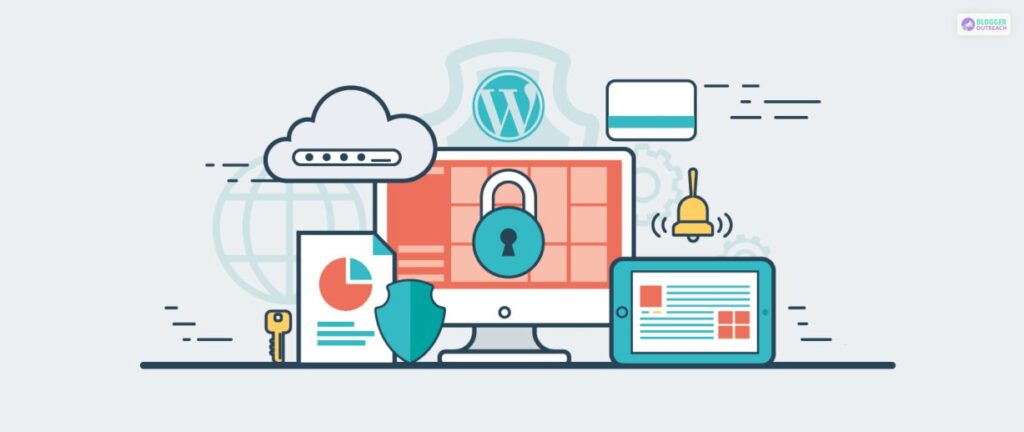
Launching a vulnerable website is not a sign of smart work. Make sure you secure your website with the following steps-
(i) Install A Security Plugin: This can help protect your WordPress website against malicious attacks. There are a lot of good plugins available; choose following your requirement.
(ii) Choose Strong Passwords: Using strong passwords is a must regarding WordPress security. Make sure to choose passwords that are long, complex, and unique.
(iii) Update Your WordPress Core, Plugins, And Themes Regularly: Keeping your WordPress core, plugins, and themes up to date is essential for maintaining your website’s security. New updates may contain security patches and other fixes that can help protect your website from malicious attacks.
(iv) Harden Your Website: Harden your website by disabling file editing, changing your login URL, and using two-factor authentication.
(v) Monitor Your Website Regularly: Monitoring your website for any malicious activity can help you detect any security issues quickly and take the necessary steps to fix them.
(vi) Backup Your Website: Regularly backing up your website is a must to ensure that you can restore it in case of any security breaches or data loss.
7. Optimizing For SEO
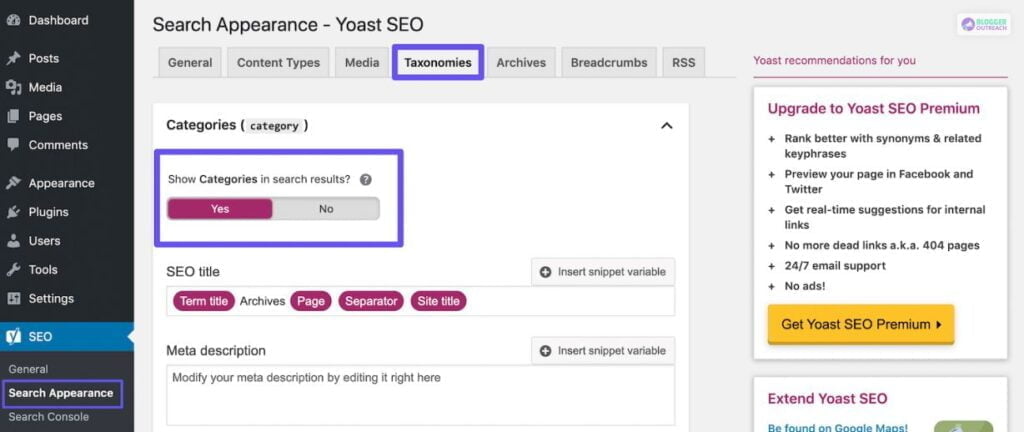
SEO helps your WordPress website to reach a larger audience. A successful SEO strategy for a WordPress website is as follows-
(i) Install And Activate An SEO Plugin: An SEO plugin can help optimize your WordPress website. This plugin will help you generate XML sitemaps, add meta tags, analyze the readability of your posts, and more.
(ii) Optimize Your Page Titles And Meta Descriptions: These are important for SEO. They should be clear and concise, include relevant keywords, and be no longer than 70 characters for page titles and 160 characters for meta descriptions.
(iii) Structure Your Site With Categories And Tags: Categories and tags help organize your content and make it easier for search engines to navigate your website. Make sure to include relevant keywords in your categories and tags.
(iv) Use Effective URLs: URLs should be short, descriptive, and include keywords. Avoid using dates and numbers in your URLs.
(v) Link Internally: Linking to other pages within your website can help search engines comprehend the structure of your website and index it better.
(vi) Add Alt Tags To Your Images: Alt tags are descriptions of images that are visible to search engine crawlers. Include relevant keywords in your alt tags to help search engines understand the content of your images.
(vii) Make Sure Your Website Is Mobile-Friendly: More and more people are browsing the web on their mobile devices. So make sure your website is optimized for mobile devices to improve your SEO.
8. Monetizing Your Website

Now that you have created your blog, it’s time to explore some monetary aspects. You can earn handsome money by leveraging your website.
(i) Sell Digital Products: You can sell digital products such as ebooks, courses, music, videos, images, and more. You can use a platform like Amazon, Etsy, or Gumroad to set up an online store.
(ii) Offer Services: You can offer services such as web design, content writing, SEO, social media management, or consulting. Platforms like Upwork or Fiverr can help you to list your services.
(iii) Use Advertising: You can use platforms such as Google AdSense or Media.net to display ads on your website and earn money when people click on them.
(iii) Become An Affiliate: You can join affiliate programs and earn a commission when people purchase products or services through your affiliate links.
(iv) Sell Memberships: You can create a membership site and offer exclusive content and benefits to members who pay a monthly or annual fee.
(v) Create A Subscription Model: You can create a subscription model, such as offering a weekly newsletter or a monthly subscription box.
(vi) Offer Courses: You can create and sell online courses on different platforms.
(vii) Host Webinars: You can host webinars and charge a fee for people to attend.
Ready To Start With WordPress Website?
Creating a WordPress website in 2023 is easy, with many tools and resources available. With the right guidance, anyone can create a website that is aesthetically pleasing and functional.
Through the use of hosting platforms, custom domains, themes, plugins, and page builders, WordPress websites can be tailored to fit any user’s needs.
With a few simple steps, anyone can create a unique and powerful website to showcase their work, build a business, or even share their story with the world. The possibilities are endless with the ever-evolving WordPress platform and its wide range of features.
I hope this WordPress Website builder guide is helpful to you. For further assistance, reach out to us!
Read Also:



